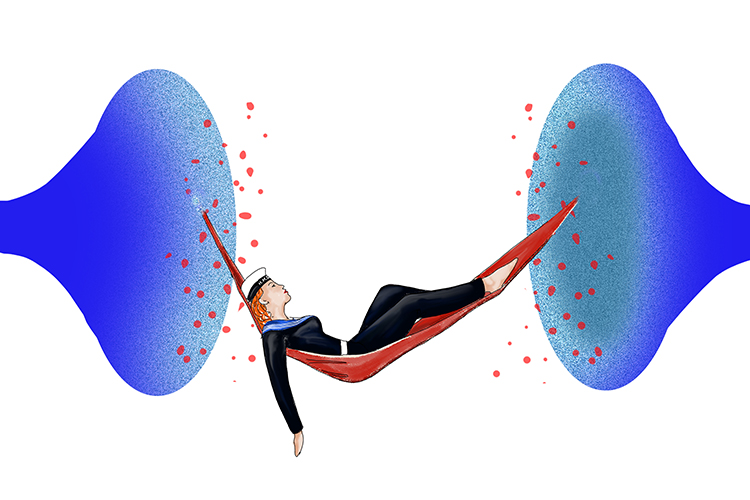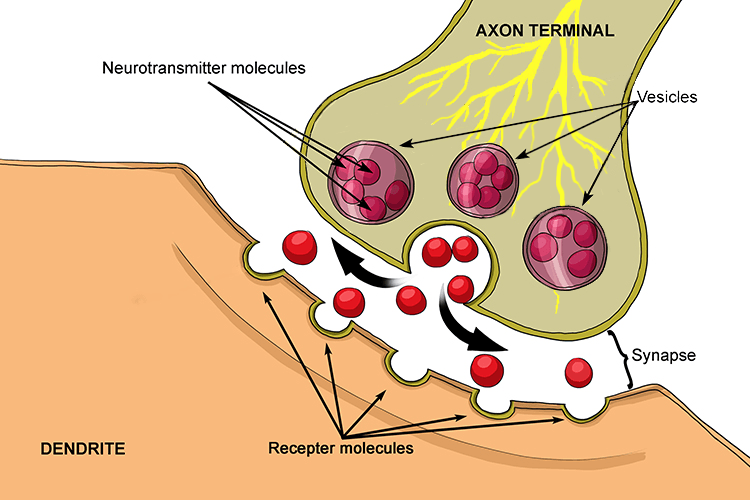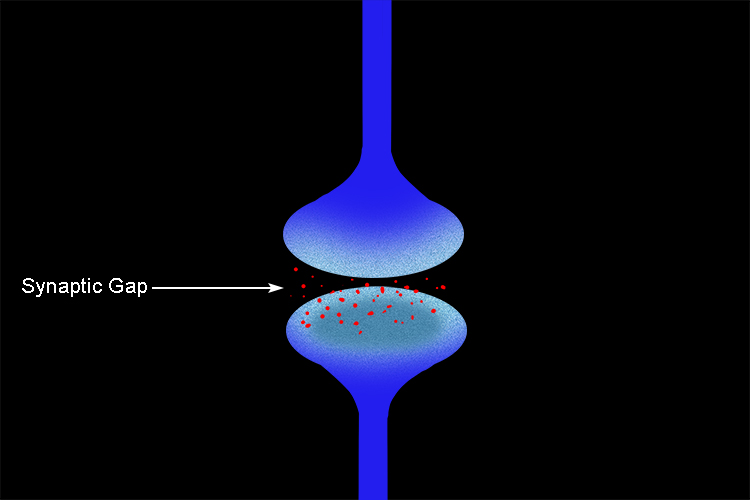Synapse – the gap between neurones
The synapse (also known as the synaptic cleft) is the minuscule gap between the axon terminal and the dendrite of the next neurone in the route taken through the nervous system by an impulse. Impulses cross the gap by diffusion of a neurotransmitter (a chemical) from the bulb-like ending on the axon terminal to receptors in the next neurone’s dendrites.

There’s a sigh as she naps (synapse) between the gap.
When an electrical impulse (a signal) reaches the end of the axon (the axon terminal) it stimulates the release of neurotransmitter molecules. The molecules cross the tiny gap between the two neurones and bind with the receptor site on the end of the dendrite of the second neurone.

Neurotransmitter molecules, also known as receptor molecules, cross the gap between the axon terminal of one neurone and the dendrite of the next.
This chemical interaction results in an electrical charge. The impulse is effectively renewed, and carries on along the second neurone’s axon until the process repeats at the next synapse, or reaches its destination – which could be the spine and/or the brain, or a muscle awaiting instruction to relax or contract.





